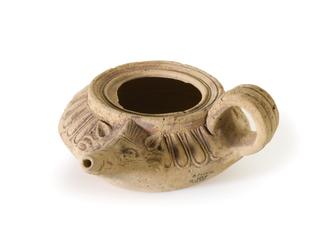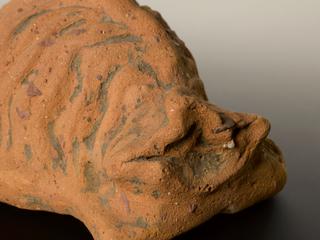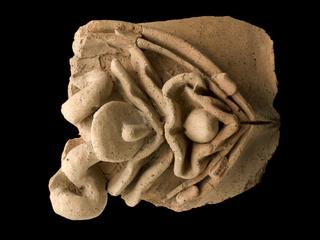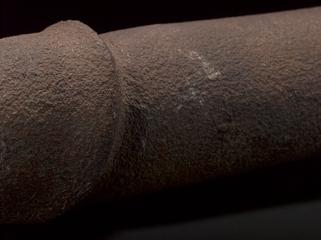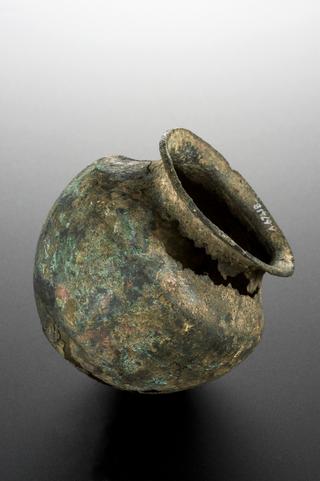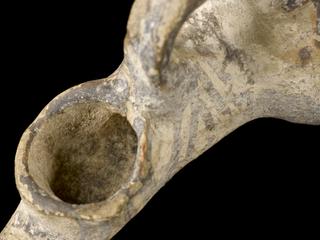
Teething charm, Roman
- Made:
- 100-500 CE in Roman Empire
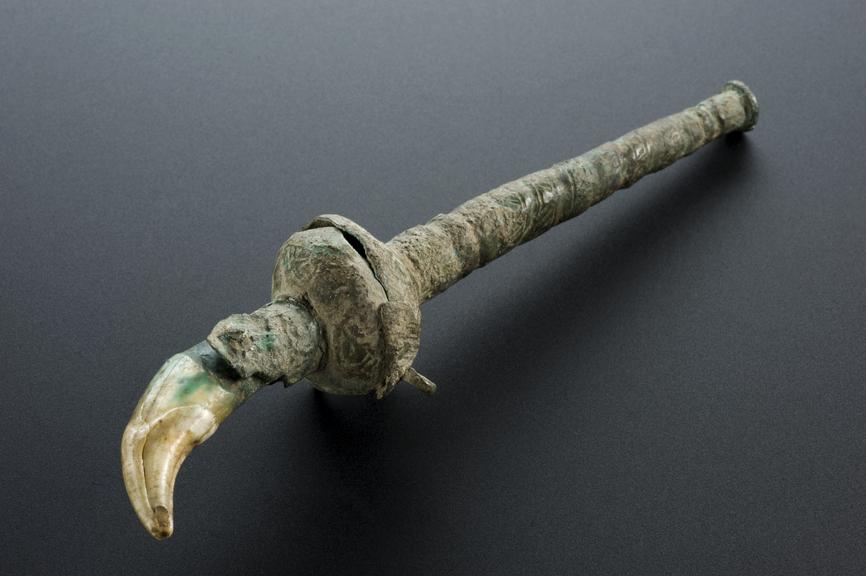
Teething charm, tooth set in bronze handle, Roman
Teething, when the teeth are breaking through the gums, can be a painful process for some babies. A teething charm is used in the hope it will help them through this difficult time. Pliny, a Roman author writing in the first century CE, recommended that a wolf or horse’s tooth be placed on the child’s body to help with teething but not to let the tooth touch the floor. This charm has a tooth set into a bronze handle.
Details
- Category:
- Classical & Medieval Medicine
- Collection:
- Sir Henry Wellcome's Museum Collection
- Object Number:
- A33500
- Measurements:
-
overall: 25 mm x 153 mm x 36 mm, .03 kg
- type:
- amulet
- credit:
- Wellcome Trust (Purchased from Stevens)
